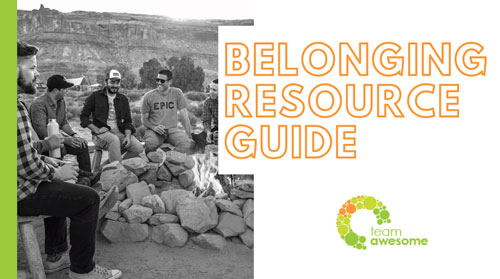Innovation is a word that has long been thrown around in the business world, and we all assume it is “important.” Yet so few companies are truly living into an innovation and creation culture. This attraction to innovation and flexibility is a big draw towards the “gig economy” where more and more employees are hanging up their badges to start their own companies or work as independent contractors. The Deloitte Millennial Survey released back in January 2014 reported that 70% of millennials see themselves working independently eventually rather than being employed in a traditional organization.
However, in the 2017 Deloitte Millennial Survey following at least of full year of political and global uncertainty (including with healthcare), the results have tipped more towards a balance between wanting flexibility with the consistency of a steady income stream. This is a moment of opportunity for organizations to retain top talent that might otherwise be motivated to go elsewhere by creating the flexibility and entrepreneurial environment within the company’s four walls. A culture of innovation means a few things that can be appealing to your team: Permission and space to iterate and make mistakes, cross-functional collaboration, and opportunity for meaningful and impactful work. And frankly, no one wants a “less-flexible” work environment. It is, after all, 2017.
Millennials appear to want the best of both worlds—
freelance flexibility with full-time stability.
–2017 Deloitte Millennial Survey
Why is Innovation Important?
There are two critical reasons why innovation is important. First (and most obviously), innovation leads to the evolution of your business in a world that keeps changing around you. If you are not growing, you are dying. Second, safe places for creativity and collaborative environments for problem solving are both valuable elements in a company culture for attracting and retaining young talent. Young leaders want a seat at the table and the space to work, and this type of culture can provide that. Creation and collaboration also cultivate ownership and buy-in from those who were a part of it, so everyone having a little skin in the game is a good thing.
3 Ways to Champion Innovation & Creativity in Your Company
Design Thinking
Design thinking is a framework for innovation in which the first stage of the process is steeped in empathy, and designers empathize with the end user and understand what they might need. It requires cross-functional perspective and for the designers to get in the field and close to the end users to be able to empathize with their needs. Wouldn’t you say this is better than a bunch of people in a room making decisions that don’t represent the user experience? I can think of about six million uses for this in just the organizational development or HR function alone.
Intrapraneurship
Intrapraneurs are people who think and act like entrepreneurs, but while working within a larger organization. The normal hallmarks of an entrepreneur (innovation, agility, risk-taking, etc.) are supported and encouraged within the company. Intrapraneurs may also often take on new projects or try and tackle projects without formally being asked to do so. How could this work in your company? Would it be a full intrapreneur culture? Would it be a selected assembly in a think tank or influencer group? This could be a great way to engage some of the most entrepreneurial-minded employees in your organization without either losing them to their own business or requiring it of every employee (since it is not for everyone).
Promote Case Studies or Idea Challenges
Disney (see: Imagineering) and Deloitte (see: Virtual Team Challenge) are two examples of companies who have held case study or idea challenges to help foster creativity and engage or recruit new talent directly from school environments. They also put resources towards similar innovation within their companies. Clearly, they understand that not only is the innovation itself valuable, but that they are using it as a leg up in the war for great talent. On a smaller scale, your company could host an internal contest for submissions for the next big idea, or invite cross-functional teams to help solve a business problem. [I would be so jazzed to go to work if I was part of this!]
Not sure where to start? Ask some of the innovative and creative people on your team what they think! Talk to your young leaders to find out what could be possible. Maybe dip a toe in the water with a shorter-term team challenge. People will never be so excited to solve your business problems for/with you. The best part will be seeing the participants light up as they do something they love for the good of the organization.
About the author: Katie Rasoul is the Chief Awesome Officer for Team Awesome, a leadership coaching and culture consulting firm. Find out more by visiting www.teamawesomecoaching.com or sign up for our mailing list for awesomeness coming straight to your inbox. Follow Team Awesome on Facebook and Twitter.



Trackbacks/Pingbacks